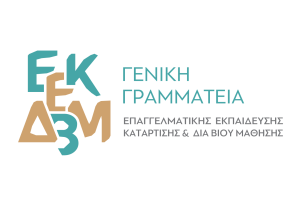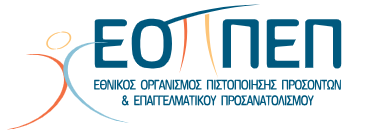Pulmonary High Blood Pressure WHO Teams: An Overview of Category and Treatment Options
Lung hypertension (PH) is an unusual however significant problem that impacts the blood vessels in the lungs, causing high blood pressure in the pulmonary arteries. This can cause various issues and also considerably influence a person’s lifestyle. To be varilux pomadatter understand as well as manage PH, the Globe Health Company (WHO) has categorized the condition into 5 unique groups based upon their underlying reasons and also therapy strategies. In this write-up, we will certainly discover each of these groups and also talk about the offered treatment options.
Group 1: Pulmonary Arterial Hypertension (PAH)
Team 1 includes PAH, a condition identified by the narrowing and stiffening of the tiny blood vessels in the lungs. This leads to boosted resistance in these vessels, requiring the heart to work more difficult to pump blood via them. PAH can be inherited or idiopathic (of unidentified reason) as well as can additionally happen as a result of other medical conditions such as connective tissue diseases, liver disease, or HIV infection.
Therapy choices for PAH goal to boost signs and symptoms, slow-moving condition development, as well as enhance general lifestyle. Medicines such as endothelin receptor antagonists, phosphodiesterase-5 inhibitors, as well as prostacyclin analogs are commonly prescribed to take care of symptoms and improve exercise capability. In many cases, lung transplant might be considered for individuals with serious PAH.
Team 2: Pulmonary Hypertension As A Result Of Left Heart Disease
Team 2 PH happens as a difficulty of left cardiovascular disease such as left ventricular dysfunction or valvular cardiovascular disease. These conditions hinder the heart’s capability to effectively pump blood, causing increased pressure in the lung arteries. Taking care of the hidden heart condition is important in dealing with Group 2 PH. This may include medications to improve heart function, valve repair work or replacement, and also lifestyle modifications to minimize pressure on the heart.
In many cases, if the heart disease can not be effectively managed, a heart transplant may be thought about as a treatment option for Team 2 PH. Nevertheless, this is a complicated and highly specialized treatment with its risks and also factors to consider.
Group 3: Lung Hypertension As A Result Of Lung Conditions and/or Hypoxia
Group 3 PH is connected with persistent lung diseases such as chronic obstructive pulmonary condition (COPD), interstitial lung illness, or sleep apnea. These problems can lead to low oxygen degrees in the blood (hypoxia) as well as boosted stress in the lung arteries. Dealing with the underlying lung illness or addressing hypoxia is vital in managing Team 3 PH.
In some cases, supplemental oxygen therapy may be recommended to enhance oxygen degrees in the blood. Medicines such as phosphodiesterase-5 preventions or endothelin receptor antagonists can additionally be utilized to minimize signs and enhance exercise capacity.
Group 4: Pulmonary High Blood Pressure As A Result Of Chronic Thromboembolic Pulmonary High Blood Pressure (CTEPH)
Group 4 PH is caused by chronic embolism in the lungs, normally arising from a condition called persistent thromboembolic lung high blood pressure (CTEPH). These blood clots block the pulmonary arteries, resulting in increased pressure in the lungs. Caring For Team 4 PH entails attending to the underlying blood clot disorder or removing the embolisms with a specialized surgery called lung endarterectomy.
In instances where pulmonary endarterectomy is not possible or unsuccessful, medications such as riociguat, a soluble guanylate cyclase stimulator, may be recommended to handle signs and also enhance workout capability.
Team 5: Lung Hypertension with Vague and/or Multifactorial Mechanisms
Team 5 incorporates PH cases that do not fit into the other established groups or have complex underlying reasons. These instances commonly need a multidisciplinary method, entailing professionals from various areas such as pulmonology, cardiology, as well as rheumatology, to determine the most ideal therapy approach. The objective is to recognize and also handle the contributing factors that cause PH, which may consist of attending to underlying clinical problems, way of living alterations, and also targeted drugs based upon specific demands.
- Routine follow-up: No matter the group classification, people with PH call for routine follow-up sees with their healthcare providers to check illness progression, adjust treatment plans, and attend to any kind of emerging complications.
- Lifestyle alterations: Along with clinical treatments, adopting a healthy way of life can dramatically boost the management of PH. This includes normal exercise, cigarette smoking cessation, maintaining a healthy and balanced weight, and taking care of tension degrees.
- Support system: Coping with PH can be tough, both physically and also psychologically. Signing up with support system or looking for therapy can offer useful assistance as well as sources for people and their caregivers.
It is essential to keep in mind that the therapy alternatives discussed in this write-up are basic suggestions and also might vary based upon private instances. Just a qualified healthcare specialist can offer individualized recommendations as well as establish a customized treatment prepare for people with lung hypertension.
To conclude
Lung hypertension that groups offer a category system that aids healthcare experts much better understand as well as handle this complex condition. By categorizing PH into unique teams, it ends up being feasible to establish targeted therapy techniques based upon the one-of-a-kind underlying reasons. While existing therapies can not treat PH, they can significantly improve symptoms, slow illness development, and also improve lifestyle for people dealing with this problem.
Recommendations:
– World Health And Wellness Organization.(2018 ). That Team Category of Pulmonary High Blood Pressure. Recovered from [source]
– Galiè, N., et al.(2015 ).2015 ESC/ERS Guidelines for the diagnosis as well as therapy of pulmonary hypertension: The Joint Task Pressure for the Medical Diagnosis as well as Treatment of Lung Hypertension of the European Society of Cardiology (ESC) as well as the European Breathing Society (ERS): Recommended by: Organization for European Paediatric and also Congenital Cardiology (AEPC), International Society for Heart as well as Lung Transplantation (ISHLT). European Heart Journal, 37( 1 ), 67-119.







